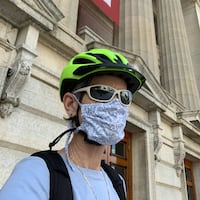That job — and the jobs for thousands of other racing enthusiasts — is at risk.
Earlier this year, Gov. Ted Strickland planned to put 17,500 slot machines at the state’s seven tracks as a way to bolster the horse racing industry and the state budget. But that idea got sidetracked by an adverse ruling by the Ohio Supreme Court. Now, McGuire and other horsemen are worried that the new voter-approved casinos in Toledo, Cleveland, Columbus and Cincinnati will spell the end of horse racing in the Buckeye state and put 12,000 people out of work.
Already, McGuire races his horses in Indiana and Pennsylvania where the purses are better than Ohio’s. “The sad part about it is you can make a living racing in other states,” he said.
“If we don’t get something to even the playing field, it’ll shut down,” McGuire predicted. “There will be tracks closing.”
The industry was struggling long before Issue 3 came along. As one example, McGuire said he had 23 horses and seven employees two years ago. Because of low purses in Ohio, he now has four horses and one employee.
The Ohio General Assembly in 1933 authorized gambling on horse races during the Great Depression as a way to create jobs and opportunities. Most believe that same promise of jobs convinced voters this year to give the go ahead for casinos in Toledo, Cleveland, Columbus and Cincinnati. All four of those cities are home to racetracks.
“The horse racing industry was already facing very, very difficult challenges,” Gov. Ted Strickland said. “And I’m very concerned, because a lot of people are employed in the racing industry, and I think that this is going to present a very serious challenge to the industry, certainly.”
All told, about 12,000 Ohioans work in the racing industry.
Strickland still plans to ask the courts for a judgment on whether the Ohio Lottery has the authority to add slot machines to race tracks — a question left unanswered by the Ohio Supreme Court in September when it said the governor’s slot machine plan was subject to a voter referendum.
And others believe that the fine print in state Issue 3, adopted by voters on Tuesday, fortifies the lottery’s ability to put video slot machines at the tracks.
Strickland could and should order the lottery to put slots at the race tracks as soon as possible, said state Sen. Bill Seitz, R-Cincinnati. That would give the race tracks a head start since the casinos won’t be built until at least 2012, he said.
Ohio Racing Commission member Tom Zaino, who served as tax commissioner during the Taft administration, predicts that without slots, five of the seven tracks will close within a few years.
With slots, said C. David Paragas, an attorney for the Ohio Legacy Fund, which represents the tracks, five of the seven tracks will survive. He said track owners are working with public officials to come up with a solution.
Republican political strategist Terry Casey, who follows the gambling industry, said he expects the tracks will eventually get slot machines but he believes the casinos will quicken some horse tracks’ demise.
“I’m not sure how it’ll all happen, but one way or another, there’s going to be some consolidation. There will be fewer tracks,” Casey said.
Issue 3 will infuse some cash into the racetrack operations, breeding programs and purses. Three percent of the expected $650 million a year in taxes is earmarked for an Ohio Racing Commission fund to help the horse racing industry. But that money may be too little, too late.
Racing Commission Deputy Director John Izzo said some tracks are treading water as it is.
“We haven’t heard anything from anybody that 'hey, we’re out of business,’” Izzo said. “We wait on the edge of our seats.”
About the Author
